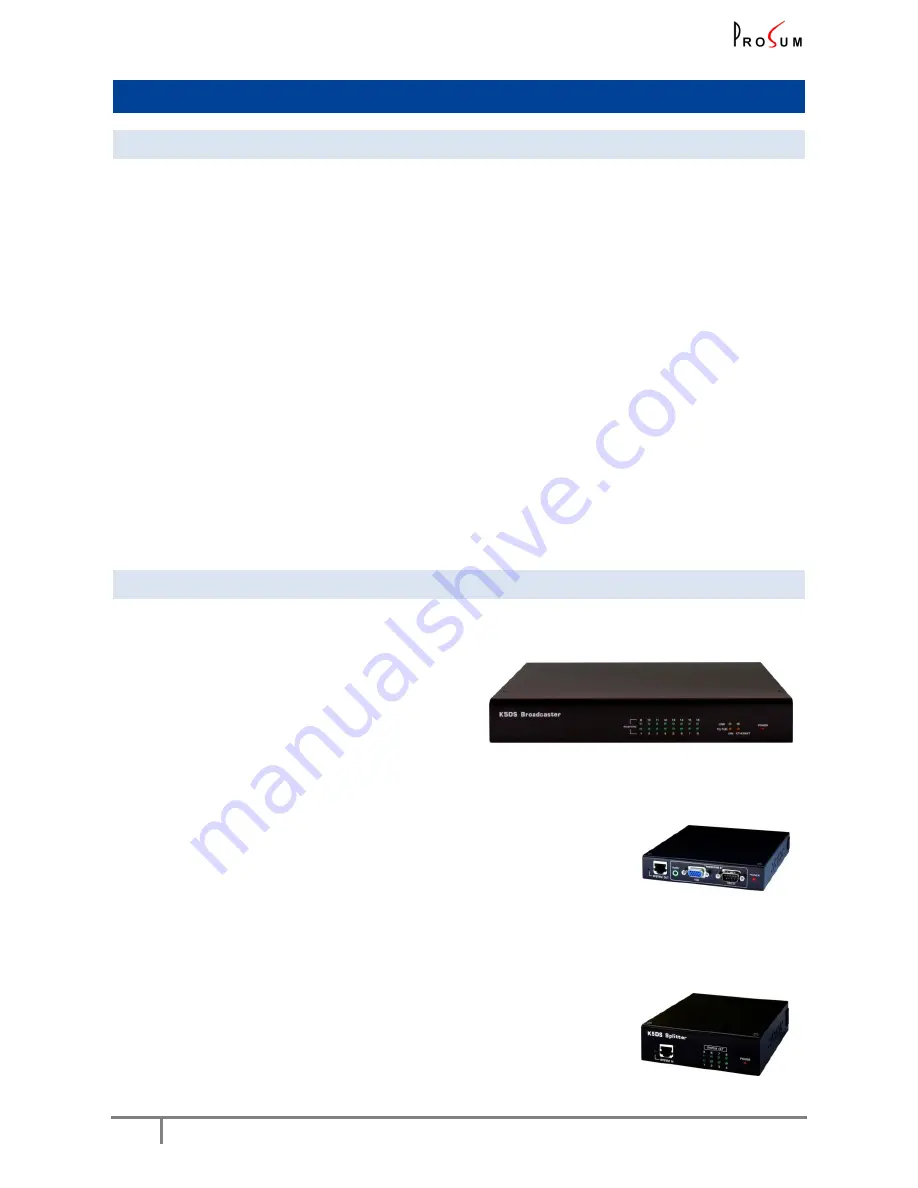
DSNET USER’S GUIDE
5
1
INTRODUCTION
1.1
DSNET ADVANTAGES
The
DSNet Digital Signage Network
is designed to be a simple, reliable yet ultra-scalable, audio video
broadcasting network that is highly compatible to most, if not all, digital signage applications.
Depending on the requirements of your application, the DSNet system can easily be scaled up from several
monitors to thousands of monitors, all outputting the same video and audio stream. Hence, it can be easily
used in a small shop or in a large supermarket.
As simple and effective as an
ultra-scalable
structure, the DSNet system does not interfere in any way with
your multimedia player or computer, or with any Digital Signage application running on it. Instead, the
whole DSNet system just serves as a multimedia distribution network.
DSNet
not only extends but also multiplies your display panels to where you want them to be, either at
convenience stores, supermarkets, shopping malls, mega-stores, campus, theaters, or other application
scenarios like those on large transport vehicles such as ocean liners, jumbo airplanes, mass transportation
systems, etc.
DSNet
can handle a quasi unlimited number of monitors distributed in an area of approximately 300m
radius. The surface covered by DSNet is sufficient for a large supermarket. The audio-visual content is
broadcasted at lower cost. With DSNet, at comparable price, you have more screens and thus you improve
the impact of your digital signage campaigns.
DSNet
also carries bi-directional RS-232 serial communications at up to 115200 bps to make possible the
setup of display panels by the player and the return of information from touch screens.
1.2
DSNET NETWORK ARCHITECTURE
DSNet
is based on three devices:
The
K5DS-BR8
or
K5DS-BR16
broadcaster
is the main
unit which receives the multimedia and RS232
streams, from the Player. It encodes and broadcasts
them to various clusters of monitors via CAT5 cables.
With respect to the Player it emulates the operation
of a monitor. It is also connected to the local area
network to allow for remote or local administration.
The
K5DS-RC2
receivers are able to receive and decode the video, the audio
and the data stream injected by the Broadcaster into the cable and to forward
it on
two
display panels. They manage the RS232 bidirectional communication
allowing the control of the screens by the Player and possibly the information
feedback in case of touch screens.
The receivers have a daisy-chain port allowing a wiring in series for more
upward scalability.
The
K5DS-SP
splitter can prove to be necessary in large configurations. It
forwards the incoming stream to eight outputs and also forwards the serial
data coming from the eight outputs to the single input. Thus, in addition to
chaining receivers, one can also use splitters to create stars. In any case, a
splitter can also be used to upscale the display capacity from where a single
receiver is originally placed.




















